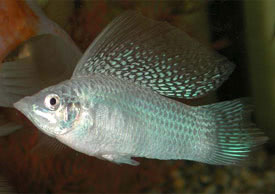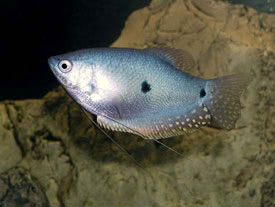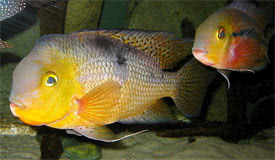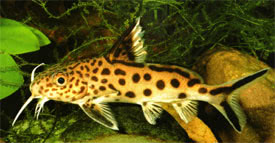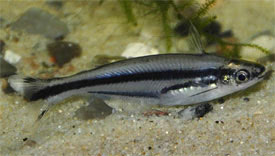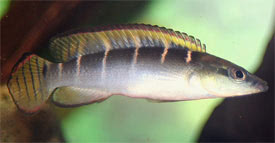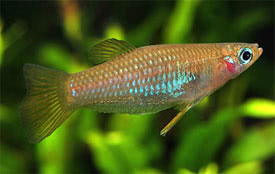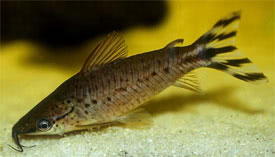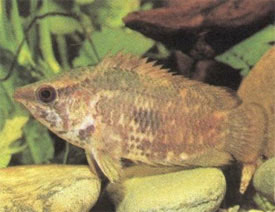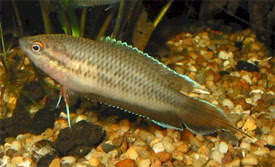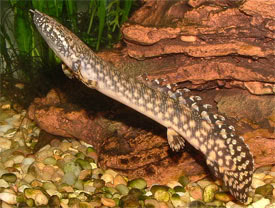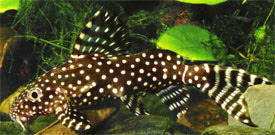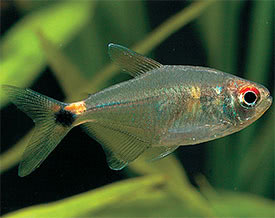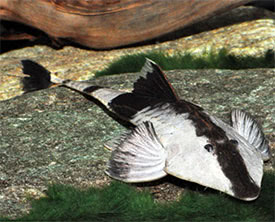
 Magyarul / Hungarian
Magyarul / Hungarian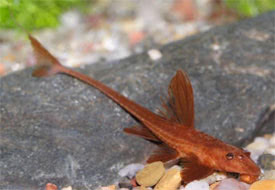



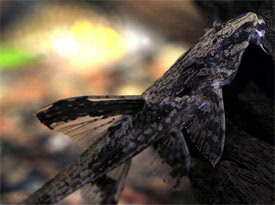
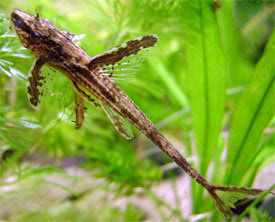
- Scientific name: Rineloricaria lanceolata
- Synonyms: Loricaria lanceolata, Hemiloricaria lanceolata
- Common name: Chocolate-colored catfish
- Group: Catfishes
- Habitat: South America; Peru, Brazil
- Size: 9-10 cm
- Biotope: Inhabits in clear and whitewater rivers, among the leaf litter over the sandy substrate.
- Social behavior: Peaceful and shy catfish, these can be combined with many peaceful species. Don’t keep with agressive fish, as they become very shy and retiring. It can be little territorial during spawning.
- Diet: Omnivorous; Feeds on biofilm („aufwuchs”) and small aquatic crustaceans in nature. In aquaria they accept sinking dried foods, vegetables such as cucumber or spinach and live and frozen foods.
- Breeding: Quite easy
- Tank: Minimum 85 litres
- Population: 4-5 fish for 150 litres
- Decoration: Use sandy substrate, and put some dried oak or beech leaves on it. Decorate the tank with roots and build rock caves to provide hiding places. Don’t use bright lighting.
- Temperature: 25-28 °C
- pH: 6-8
- Hardness: 5-20 NK°
- Lifespan: 8-12 years
Description: Chocolate-colored catfish are nocturnal species. Rineloricaria lanceolata has a very conspicuous color pattern consisting of six black transverse bars on the dorsum, and fins well pigmented with a pale spot at the base of each and most noticeable on the pectoral fin. Their body is armored and stiff, with the top caudal fin ray ending in a delicate "whip-like" extension. Rineloricaria lanceolata has a red color variation, but there is no concrete evidence that they actually exist in the wild. It could be a hybridised fish, as there are many similar fish in the trade.
The male has broader head than the female, and their head and pectoral spines are densely covered with odontodes. Breeding is not too difficult in suitable conditions. Buy at least a group of 6 juvenile fish and raise them. This is the best way to get at least 1 pair. The spawning can be induced with a large water change, with cool water, which simulating the rainy season in the fish’s natural habitat. Put some ceramic or pvc pipes in the breeding tank with a diameter of 5 cm. When the male is in spawning condition, he will select a particular cave and clean it carefully. The female will visit this cave and deposit her eggs, which the male then fertilises. After spawning the male will guard the cave and continually fan the eggs with his fins. The female can be removed at this point, she plays no further part in broodcare. The eggs hatch in 4-5 days, and are free swimming 2 or 3 days later. The male can now also be removed. The most important thing is that the fry don't starve. Give them cucumber slices or boiled spinach and they also accept microworm and brine shrimp nauplii. The vegetable matter must be soft enough for them to digest. They are also sensitive to water quality, and small daily water changes are recommended.





